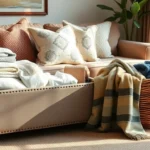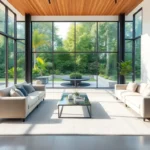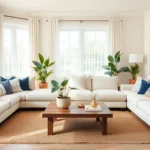Your living room couch isn’t just furniture—it’s the centerpiece that sets the tone for your entire space. Whether you’re hosting friends for movie night or unwinding after a long day, the right couch transforms your living room from ordinary to extraordinary.
We’ve all experienced that moment when we walk into a room and instantly feel drawn to sink into a perfectly positioned sofa. That’s the magic of choosing the right couch for your space. From sleek modern sectionals to classic leather sofas, the possibilities are endless when you know what to look for.
Finding the perfect couch involves more than just picking a pretty color or comfortable cushions. We’ll explore how size, style, and functionality work together to create a living room that reflects your personality while meeting your everyday needs. Get ready to discover couch ideas that’ll make your living room the envy of every visitor.
Choose the Perfect Size Couch for Your Living Room Layout
Selecting the right size couch transforms your living room from cramped and awkward to comfortable and inviting. We’ll guide you through the essential steps to ensure your new sofa fits perfectly within your space.
Measure Your Space Before Shopping
Measuring your living room dimensions prevents costly sizing mistakes that could leave you with furniture that doesn’t fit through doorways or overwhelms your space. Start by recording the length, width, and height of your room using a measuring tape.
Document doorway measurements including the front door, hallway passages, and any turns your couch will need to navigate during delivery. Most standard doorways measure 32 inches wide, but older homes often have narrower openings.
Mark electrical outlets and heating vents on your room sketch since you’ll need to position your couch away from these fixtures. Maintain at least 6 inches of clearance from heating elements and ensure easy access to power sources for lamps or electronics.
Account for existing furniture placement by measuring your coffee table, side tables, and entertainment center. These pieces will influence where your couch can realistically fit within the room’s layout.
Consider Traffic Flow Around the Couch
Traffic flow determines how comfortably people move through your living room without bumping into furniture or feeling squeezed between pieces. Plan for at least 18 inches of walking space around your couch’s perimeter.
Primary walkways require 36 inches of clearance to accommodate two people passing comfortably. These main paths typically connect your living room entrance to other frequently used areas like the kitchen or hallway.
Secondary pathways need 24 to 30 inches for single person movement around the couch’s sides and back. We recommend testing these measurements by placing painter’s tape on the floor before making your purchase.
Consider how people enter and exit seating by ensuring adequate space for standing up and sitting down. Leave 12 to 18 inches between your couch and coffee table for comfortable leg extension and easy access.
Scale the Couch to Room Proportions
Room proportions determine whether your couch looks appropriately sized rather than dwarfed by a large space or overwhelming a smaller room. Follow the two-thirds rule where your couch should occupy about two-thirds of your wall length.
Ceiling height influences couch back height selection to maintain visual balance within your living room. Standard 8-foot ceilings pair well with couches featuring 32 to 36-inch back heights, while higher ceilings can accommodate taller profiles.
Room square footage guides seating capacity to ensure your couch doesn’t monopolize the available space. Living rooms under 150 square feet work best with loveseats or apartment-sized sofas, while larger spaces can accommodate sectionals or full-sized couches.
Visual weight affects how heavy your couch appears within the room’s overall design scheme. Light-colored fabrics and raised legs create an airier feel, while dark colors and solid bases add substantial visual presence to your living room layout.
Select Couch Styles That Match Your Home Decor
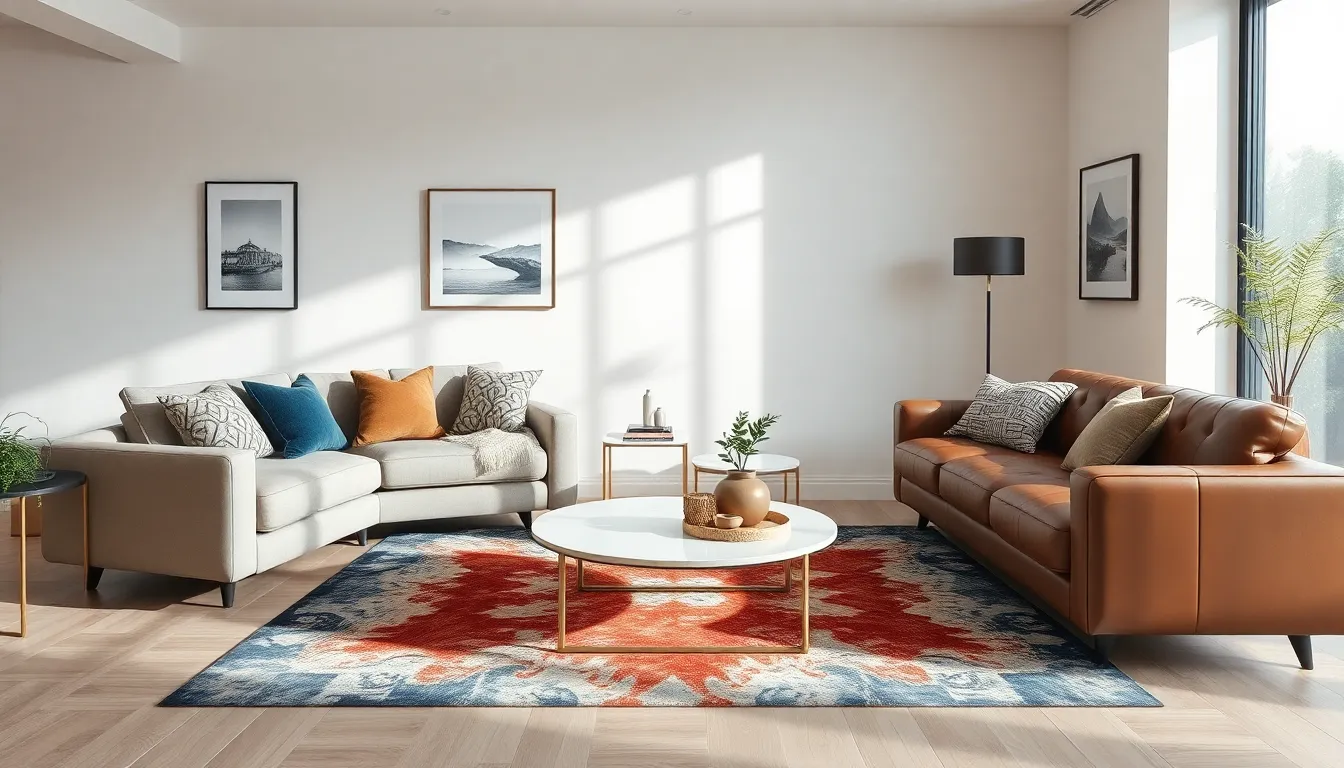
Your couch style choice directly impacts your living room’s overall aesthetic and personality. We’ll explore three main style categories to help you find the perfect match for your space.
Modern and Contemporary Couch Designs
Low profile sofas create an airy, spacious atmosphere that makes rooms appear taller. These sleek designs sit closer to the ground and work exceptionally well in minimalist or contemporary settings.
Curved leather sofas instantly elevate your room’s sophistication with their flowing lines and luxurious materials. The curved shapes add visual interest while maintaining the clean aesthetic that modern spaces demand.
Boucle fabric couches offer incredible versatility for today’s homeowners. This textured material adapts seamlessly to modern, boho, or neutral design schemes, making it an excellent investment piece.
Traditional and Classic Sofa Options
Roll arm sofas provide timeless elegance with their distinctive curved armrests and classic proportions. These designs complement traditional or farmhouse aesthetics perfectly, offering enduring style that never goes out of fashion.
Lawson sofas feature simple silhouettes with generously padded cushions for ultimate comfort. When upholstered in traditional fabrics like toile or chintz, these versatile pieces anchor traditional living rooms with their clean, unfussy design.
Transitional Styles for Versatile Appeal
Slope arm sofas bridge the gap between formal and casual with their gently curved silhouettes. These comfortable designs work beautifully in spaces that blend traditional and contemporary elements.
Pillow arm sofas create a cozy, laid back atmosphere with their plump cushioned armrests. The relaxed styling makes these couches perfect for transitional spaces that prioritize comfort without sacrificing style.
Transitional Lawson sofas in neutral colors like gray, black, or white blend effortlessly into versatile design schemes. These adaptable pieces allow you to change your room’s accessories and accent colors while maintaining a cohesive foundation.
Pick the Right Couch Material for Your Lifestyle
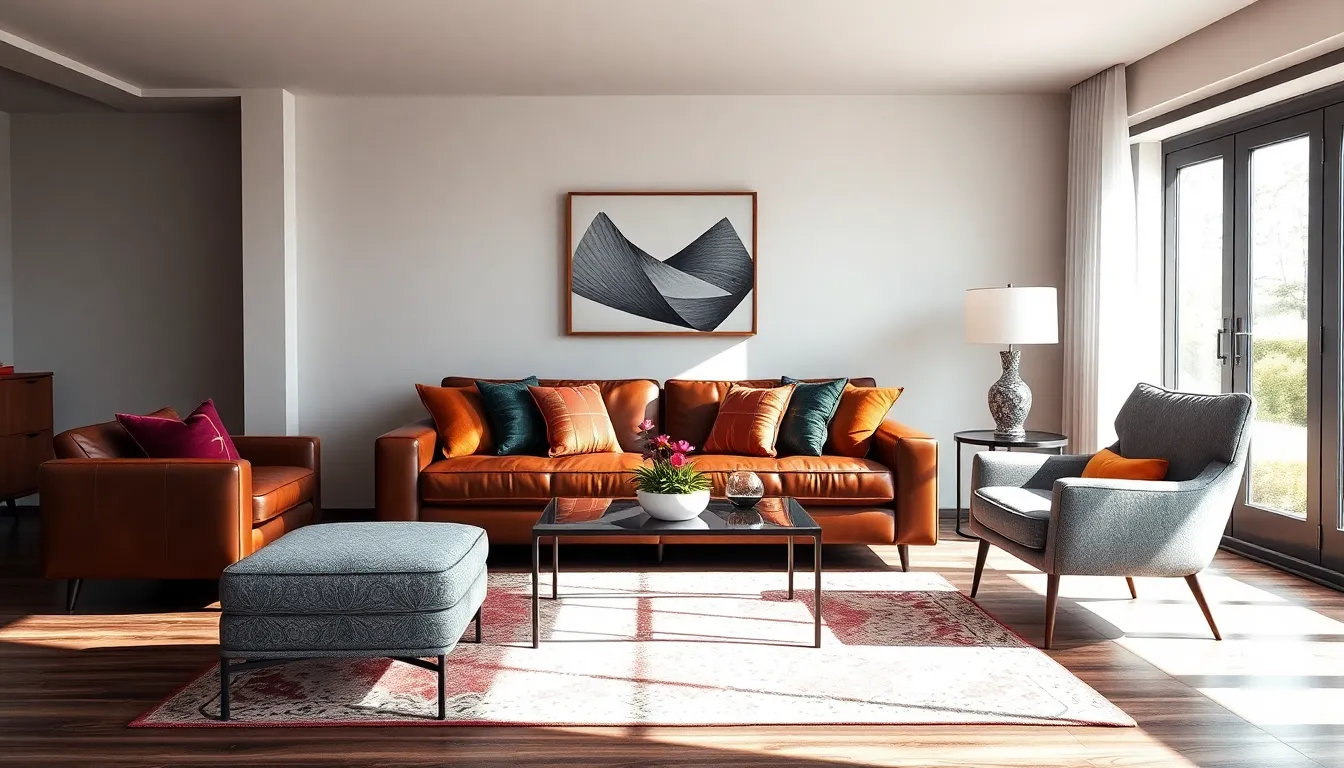
Selecting the perfect couch material affects both your daily comfort and long-term satisfaction with your furniture investment. We’ll explore three essential material categories that suit different household needs and preferences.
Leather Couches for Durability and Elegance
Leather sofas deliver unmatched durability while adding sophisticated elegance to any living room design. Families with pets and children benefit from leather’s easy maintenance properties since spills wipe away effortlessly without permanent staining. This classic material enhances your living room’s aesthetic appeal with its timeless look that improves with age.
Maintenance requirements stay minimal with leather upholstery compared to fabric alternatives. Regular dusting and occasional conditioning keep leather couches looking pristine for decades. Investment value remains high since quality leather furniture often lasts 15-20 years with proper care.
Fabric Upholstery Options and Care Requirements
Cotton upholstery offers exceptional softness and breathability that many homeowners prefer for daily comfort. This popular fabric choice provides natural temperature regulation but requires careful maintenance due to its staining and wrinkling tendencies.
Linen creates a natural and casual atmosphere perfect for relaxed living spaces needing an effortless aesthetic. Durability proves excellent with linen fabrics though direct sunlight exposure can cause fading over time.
Wool delivers outstanding stain resistance properties while blending beautifully with synthetic fibers for enhanced durability. Maintenance stays manageable with wool upholstery since most spills resist permanent absorption.
Care requirements vary significantly across fabric types with cotton needing frequent cleaning and linen requiring sun protection. Professional cleaning every 12-18 months keeps fabric couches looking fresh and extends their lifespan considerably.
Performance Fabrics for High-Traffic Homes
Performance fabrics withstand heavy daily use while maintaining their appearance in busy households with active families. These specially engineered materials feature stain-resistant coatings that repel spills and simplify cleanup processes.
Microfiber stands out among synthetic performance options since it resists pet claw scratches better than traditional fabrics. Durability surpasses standard upholstery materials while offering easy maintenance that busy families appreciate.
Treatment technologies in performance fabrics prevent permanent staining from common household spills like coffee, juice, and food. Cleaning typically requires only mild soap and water rather than expensive professional services.
Versatility shines through performance fabric collections that now include various textures, colors, and patterns previously unavailable in durable materials. Modern manufacturing techniques create performance fabrics that look and feel like luxury materials while providing superior practicality.
Determine the Best Couch Color for Your Living Room
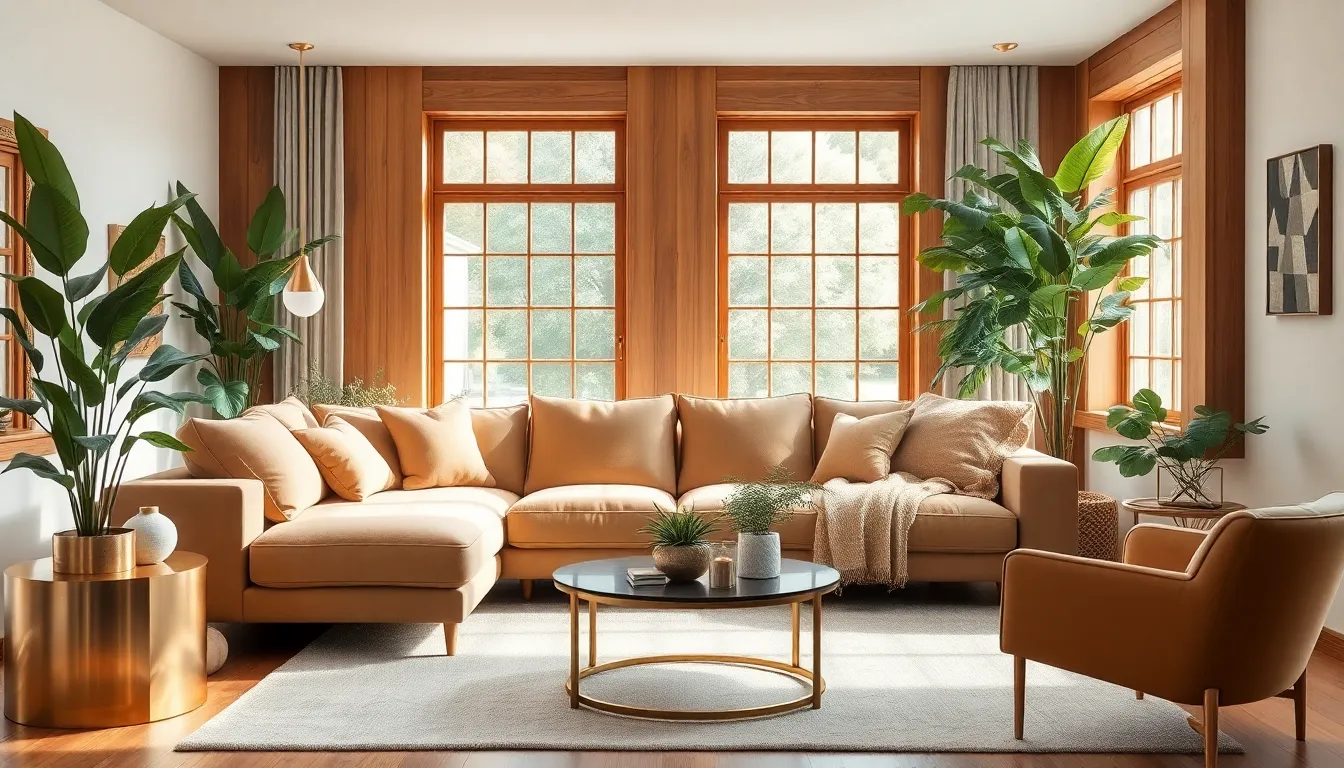
After selecting the perfect size, style, and material for your couch, we need to consider the color that’ll transform your living room’s entire atmosphere. The right couch color serves as the foundation for your room’s aesthetic while reflecting your personal style and complementing your existing decor.
Neutral Tones for Timeless Appeal
Warm neutrals are gaining popularity as they replace cool grays that many now consider cold and one-dimensional. These earthy tones like taupe, camel, and mushroom create depth and warmth in any living space.
Soft camel stands out as a classic choice for couches, offering versatility that works with various design styles and color palettes. This timeless hue pairs beautifully with both warm and cool accent colors, making it an investment piece that won’t go out of style.
Mushroom gray provides a sophisticated alternative to traditional beige, offering subtle undertones that add visual interest without overwhelming the room. We recommend this color for homeowners who want neutral sophistication with modern appeal.
Taupe delivers the perfect balance between brown and gray, creating a grounding element that complements both traditional and contemporary furnishings. This versatile shade works exceptionally well in rooms with natural wood elements and metal accents.
Bold Colors to Make a Statement
Deep blues are trending for their dramatic effect and ability to create cozy, intimate atmospheres in living rooms. These rich hues work particularly well in spaces with ample natural light, where they can showcase their full depth and complexity.
Punchy reds add vibrant energy to living rooms, creating focal points that command attention and spark conversation. We suggest using red couches in rooms with neutral walls and decor to prevent color overload.
Charcoal gray remains a popular choice even though the decline of cool grays, offering versatility and sophistication that bridges traditional and modern design aesthetics. This deeper shade provides more visual weight than lighter grays while maintaining the flexibility to work with various accent colors.
Moss green brings natural elements indoors, creating calming environments that connect with biophilic design trends. This earthy tone pairs beautifully with warm wood tones and brass accents.
Patterned Couches as Focal Points
Curved sofas with bold patterns or colors create striking focal points that encourage conversation while adding visual interest to your living room layout. These designs work especially well in open concept spaces where the couch needs to anchor the seating area.
Croissant sofas feature refined, curved designs that combine elegance with comfort, making them perfect canvases for both neutral and bold colors. We recommend these styles for homeowners who want sculptural furniture pieces that serve as functional art.
Dual aspect sofas work ideally in open concept spaces, helping manage room flow while facilitating multiple conversation areas. These versatile pieces can accommodate bold patterns or colors without overwhelming smaller adjacent spaces.
Geometric patterns create visual depth and movement, particularly effective on curved sofa silhouettes where the pattern follows the furniture’s natural lines. Consider these designs when you want your couch to serve as the room’s primary artistic element.
Consider Functional Couch Features That Add Value
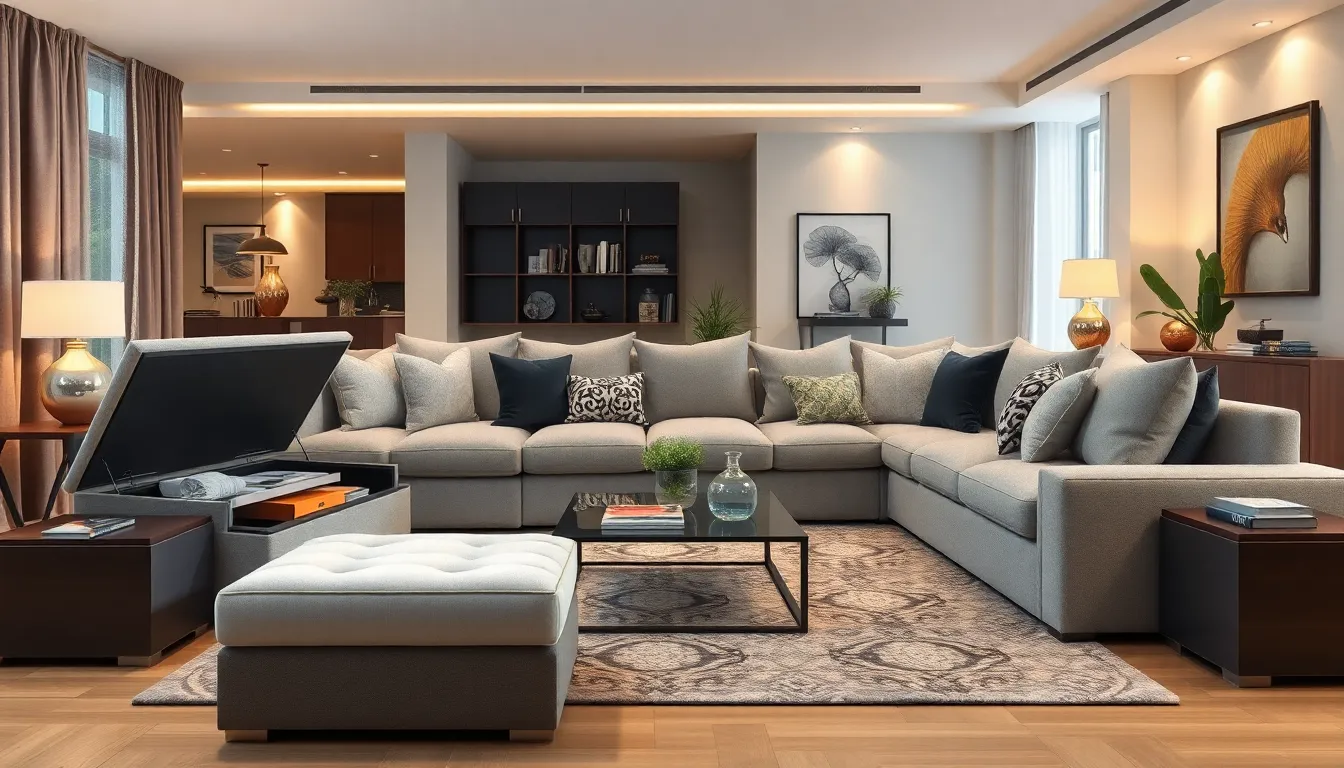
Beyond style and comfort, we’ve found that functional features significantly boost your couch’s value and versatility. Smart design elements transform an ordinary sofa into a hardworking centerpiece that serves multiple purposes throughout your home.
Storage Ottomans and Hidden Compartments
Storage ottomans offer dual functionality that maximizes your living room’s potential. These versatile pieces provide extra seating when guests arrive while concealing blankets, pillows, and toys inside hidden compartments. We recommend choosing ottomans with sleek designs that blend seamlessly with modern decor styles.
Built-in storage compartments within couches create additional organization opportunities without sacrificing style. Many contemporary sofas feature hidden storage underneath seat cushions or within armrests. These compartments work perfectly for storing remote controls, magazines, and seasonal items you need nearby but don’t want cluttering your coffee table.
Reclining and Adjustable Seating Options
Reclining sofas deliver customizable comfort that adapts to your daily activities. Users can adjust seating positions from upright conversation mode to fully reclined relaxation settings with simple lever or button controls. This flexibility makes your couch ideal for everything from hosting dinner parties to creating a cozy entertainment area.
Power reclining mechanisms offer smooth, quiet operation that enhances the user experience. Electric controls allow precise positioning adjustments, while some models include massage functions and heating elements. We’ve noticed these features particularly appeal to families who use their living room as a primary gathering space for movie nights and reading sessions.
Convertible Couches for Multi-Purpose Use
Convertible couches transform from daytime seating into comfortable sleeping accommodations for overnight guests. These space-saving answers work exceptionally well in studio apartments, guest rooms, and multi-purpose living areas. Modern convertible designs eliminate the bulky appearance of traditional sleeper sofas while maintaining sleeping comfort.
Multi-functional designs often incorporate storage compartments alongside their convertible features. Some models include built-in side tables, USB charging ports, and adjustable headrests that enhance both sofa and bed functionality. We recommend testing the conversion mechanism in-store to ensure smooth operation and comfortable sleeping surfaces before making your final decision.
Arrange Multiple Seating Pieces for Optimal Flow
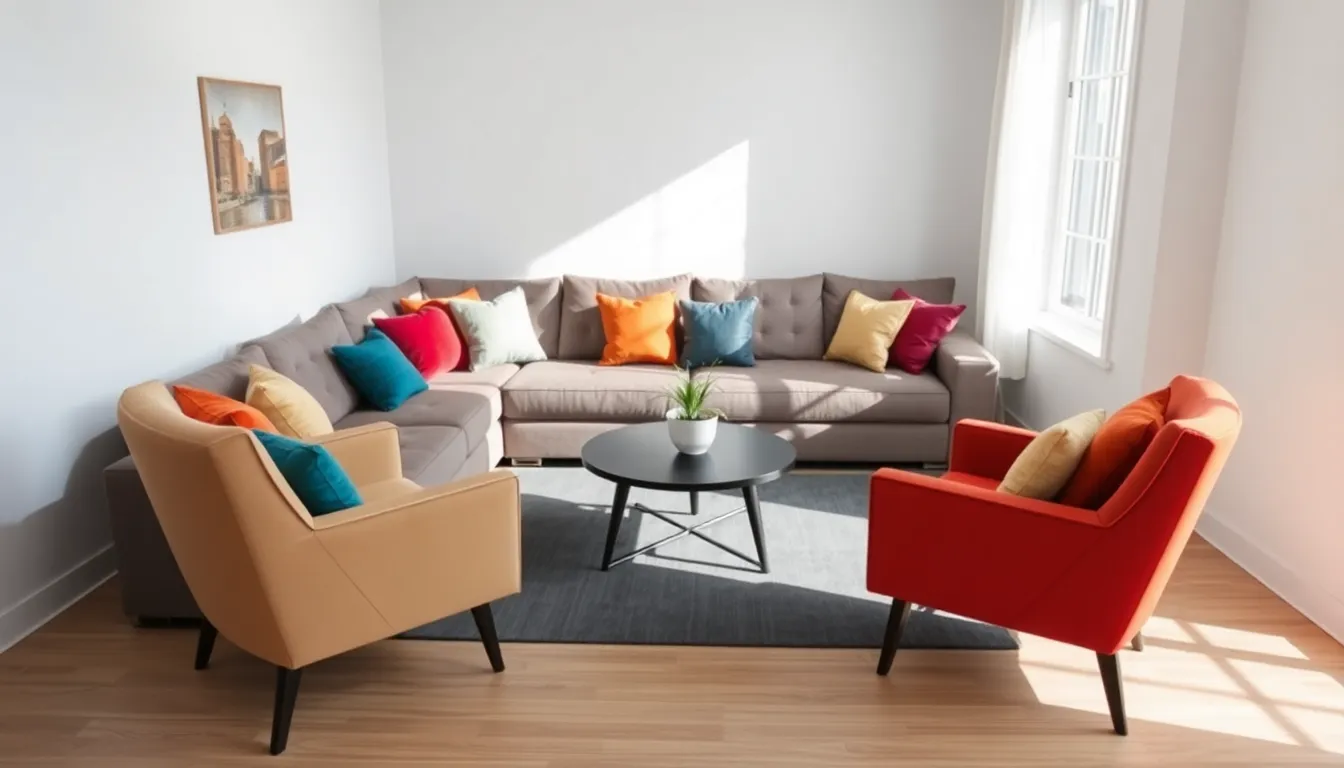
Moving beyond single couch configurations allows us to create more ever-changing and functional living spaces. Strategic placement of multiple seating pieces enhances conversation flow while accommodating various activities and family sizes.
Sectional Couches for Large Families
Large families benefit most from sectional couches that accommodate everyone comfortably during gatherings. These versatile pieces can be arranged in various configurations to suit different room sizes and shapes, making them ideal for households with multiple family members.
L-shaped sectionals maximize seating while defining separate areas for conversation and relaxation. We recommend positioning the longer section against your primary wall and allowing the shorter section to float into the room, creating natural traffic patterns around the furniture.
U-shaped sectionals work exceptionally well in spacious living rooms where you need to accommodate eight or more people regularly. This configuration creates an intimate conversation area while providing multiple seating zones for different activities like reading, watching TV, or playing games.
Modular sectional pieces offer the ultimate flexibility for growing families. You can reconfigure these sections seasonally or when hosting larger gatherings, adapting your seating arrangement to match your current needs.
Loveseat and Chair Combinations
Combining a loveseat with two armchairs creates a cozy setup that works perfectly in smaller spaces while maintaining conversation flow. This arrangement facilitates natural interaction patterns and can include a coffee table for added functionality without overwhelming the room.
Flexibility becomes the key advantage of loveseat and chair combinations since you can easily rearrange pieces to suit different room layouts or special events. Moving individual chairs to accommodate extra guests or create intimate conversation areas requires minimal effort compared to repositioning larger furniture pieces.
Symmetrical arrangements work beautifully when you place two identical armchairs facing the loveseat. This balanced approach creates visual harmony while ensuring everyone has equal access to the conversation area and any entertainment centers.
Angled positioning adds visual interest by placing chairs at slight angles across from the loveseat rather than perfectly parallel. This technique improves walkways around furniture while creating a more ever-changing and welcoming seating arrangement.
L-Shaped Configurations for Corner Spaces
Corner spaces present unique opportunities to maximize seating without sacrificing room flow when you use L-shaped configurations strategically. These arrangements make the most of available space while creating defined seating areas that don’t interfere with traffic patterns.
Corner sectionals excel at filling awkward corner spaces that might otherwise remain unused or accommodate only small accent pieces. L-shaped sectionals provide ample seating while making efficient use of corner real estate that traditional sofas can’t use effectively.
Space efficiency becomes particularly crucial in smaller rooms where maximizing every square foot matters for both function and visual appeal. L-shaped configurations allow you to seat more people without requiring additional floor space that separate chairs or loveseats would demand.
Traffic flow improvements result from corner positioning since the seating arrangement naturally directs movement around the perimeter of the room. This setup prevents the common problem of furniture blocking natural pathways between room entrances and other functional areas.
Style Your Couch With Complementary Accessories
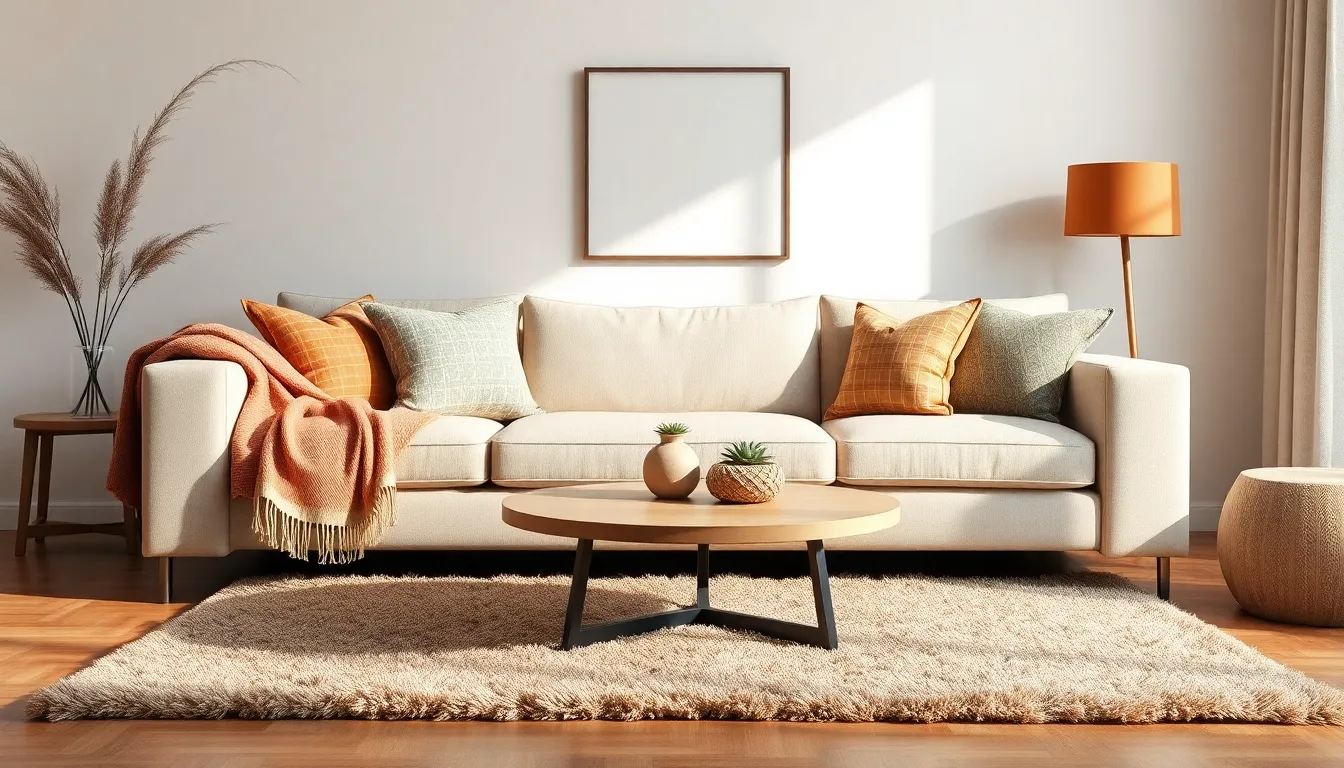
Once you’ve selected your perfect couch, the right accessories transform it from a simple seating solution into the stunning centerpiece of your living room. Strategic styling choices enhance both comfort and visual appeal while tying together your entire design scheme.
Throw Pillows and Blankets for Comfort
Throw pillows instantly elevate your couch’s comfort level while adding personality to your space. We recommend choosing pillows in complementary colors that echo other elements throughout your room, such as artwork, curtains, or accent walls. Mix different textures and sizes to create visual interest—pair smooth velvet pillows with nubby linen ones, or combine large square pillows with smaller lumbar styles.
Blankets serve both functional and aesthetic purposes on your couch. Drape a soft throw over one arm of your sofa for easy access during movie nights, or fold it neatly across the back for a more polished look. Natural materials like cotton, wool, or cashmere add warmth and sophistication to any couch style, from modern leather to traditional fabric options.
Layer multiple throw pillows using the odd number rule for the most pleasing arrangement. Three or five pillows typically create better visual balance than even numbers, and varying the heights and shapes prevents your couch from looking too uniform or staged.
Coffee Tables That Match Your Couch Height
Coffee tables should sit at the optimal height relative to your couch cushions for both comfort and visual harmony. We suggest selecting tables that measure 12 to 18 inches high, ensuring they align closely with your couch seat height or sit slightly lower. This range allows comfortable access to drinks, books, and decorative items without straining to reach across an awkward height difference.
Round coffee tables work particularly well with sectional couches, as they eliminate sharp corners and create better traffic flow around curved seating arrangements. Rectangular tables complement traditional straight couches and provide more surface area for entertaining or displaying coffee table books and decorative objects.
Consider the visual weight of your coffee table in relation to your couch style. Heavy leather couches pair beautifully with substantial wood or metal tables, while lighter fabric couches benefit from glass or acrylic tables that maintain an airy feel in your living room.
Area Rugs to Define the Seating Area
Area rugs anchor your couch and create a cohesive seating area that feels intentional and well designed. We recommend choosing rugs large enough to accommodate the front legs of your couch, which typically means selecting at least an 8×10 foot rug for most living room layouts. This sizing ensures your seating area feels grounded rather than floating in the middle of your room.
Rug placement transforms the entire feel of your living space by defining boundaries and adding warmth underfoot. Position your rug so it extends beyond your couch on both sides, creating a generous foundation that encompasses your coffee table and any accent chairs you’ve included in your seating arrangement.
Pattern and texture choices in area rugs can either complement or contrast with your couch fabric for different design effects. Neutral solid rugs allow patterned couches to shine as the focal point, while geometric or traditional patterns can add visual interest beneath solid colored furniture. Natural fiber rugs like jute or wool add texture and durability to high traffic living areas.
Budget-Friendly Living Room Couch Ideas That Look Expensive
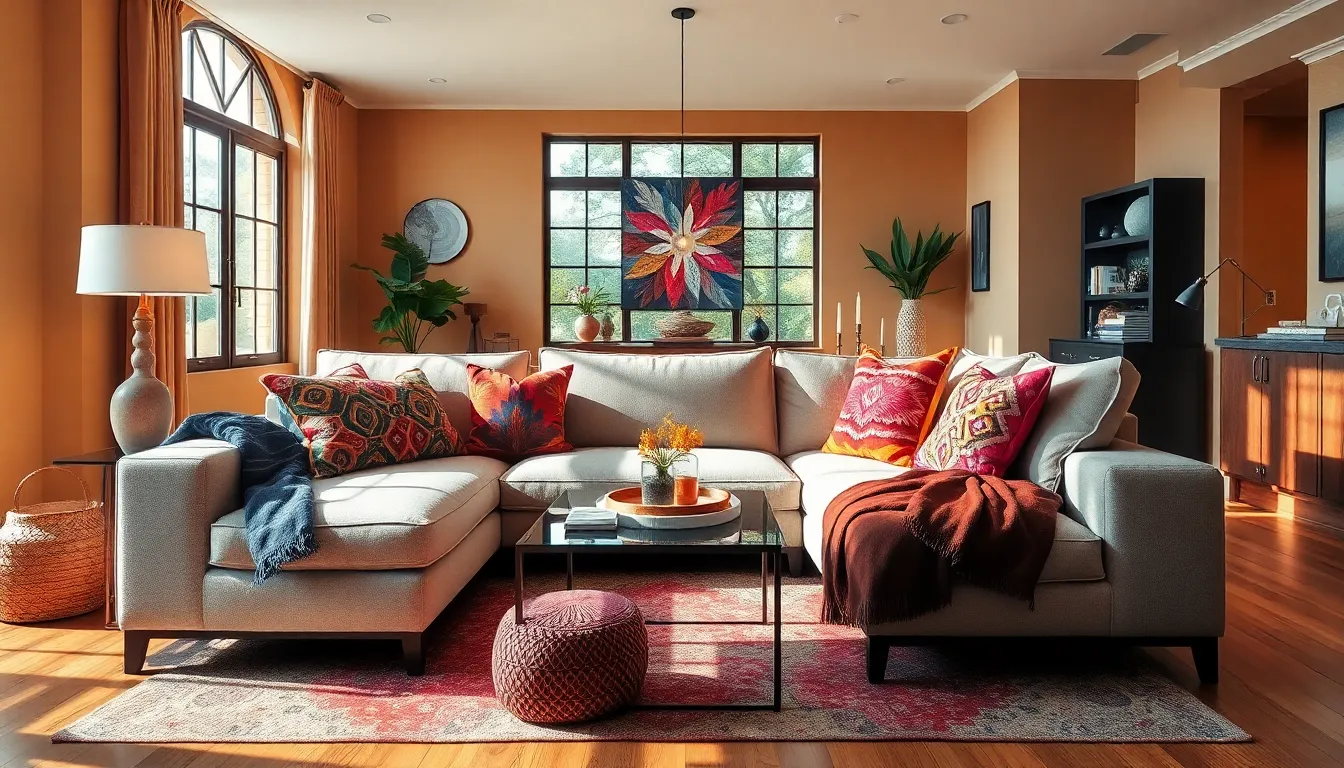
We’ve discovered that transforming your living space doesn’t require very costly. Many living rooms can achieve that high-end designer look with strategic couch selections that mimic luxury pieces without the premium price tag.
Affordable Alternatives to Designer Pieces
Budget conscious shoppers can find stunning couches under $500–$800 from retailers like Wayfair, IKEA, and Amazon that rival expensive designer pieces. These affordable sofas feature clean lines, tapered or metal legs, and neutral or jewel-toned upholstery that seamlessly fits various décor styles. Modern sectionals and mid-century sofas under $600 closely resemble high-end brands, offering both apartment-sized and full-size options in contemporary, classic, or transitional designs.
Rooms To Go frequently offers discounted sets and individual pieces that help consumers achieve curated looks for significantly less money. Value-focused retailers and online marketplaces provide access to look-alike couches that capture designer aesthetics at fraction of the cost. Secondhand platforms such as Craigslist, Facebook Marketplace, and thrift stores serve as rich sources for near-designer couches at reduced prices, allowing us to score premium quality pieces that others might overlook.
DIY Couch Makeover Projects
Transform your existing couch into a custom showpiece through cost-effective DIY projects that deliver professional results. Reupholstering with new fabric instantly updates any tired couch, while adding slipcovers provides a fresh look that’s easily changeable with seasons or trends. Swapping out old pillows and throw blankets for textured options creates visual interest through layered fabrics and mixed patterns.
Simple upgrades like painting wooden legs or adding decorative cording give couches that customized, custom appearance we associate with expensive furniture. These DIY updates elevate a couch’s appearance by adhering to cohesive color palettes and incorporating design elements that match your room’s aesthetic. Projects range from basic pillow arrangements to complete fabric overhauls, each offering opportunities to personalize your seating while maintaining budget consciousness.
Shopping Tips for Quality on a Budget
Smart shopping strategies ensure we get maximum value without compromising on quality or durability. Always prioritize reading reviews, checking measurements, and verifying frame and cushion materials before making any purchase decisions. Look for solid wood or metal frames over particleboard construction, and seek high-density foam or polyester fiber fill for superior comfort and longevity.
Shopping during sales events and comparing prices across multiple retailers leads to important savings on quality pieces. Take time to research different brands and their construction methods, as this knowledge helps identify genuine value among budget options. Consider delivery costs and return policies when calculating total investment, and don’t hesitate to negotiate prices on floor models or slightly damaged pieces that can be easily repaired.
Conclusion
Your living room couch doesn’t have to be a compromise between style and function. We’ve shown you how to navigate the selection process with confidence by considering size proportions material quality and color choices that work for your lifestyle.
Remember that the best couch investment is one that grows with your needs. Whether you’re working with a tight budget or have room to splurge focus on pieces that offer versatility through modular designs functional features or timeless styling.
Take your time with this decision and trust your instincts. Your perfect couch is out there waiting to become the centerpiece that brings your vision to life and creates countless memories for years to come.
Frequently Asked Questions
What factors should I consider when choosing the right couch size for my living room?
When selecting a couch size, measure your space carefully including doorways and existing furniture placement. Consider traffic flow by leaving at least 18-24 inches of clearance around the couch for comfortable movement. Follow the two-thirds rule where your couch should span about two-thirds of the wall length. Also account for ceiling height and visual weight to ensure proper scaling and proportion within your room.
What are the main couch style categories to match my home decor?
There are three main style categories: Modern/Contemporary (featuring low-profile sofas, curved leather designs, and boucle fabrics), Traditional/Classic (including roll arm and Lawson sofas for timeless elegance), and Transitional styles (like slope arm and pillow arm sofas that bridge formal and casual settings). Choose based on your existing decor and personal aesthetic preferences.
Which couch material is best for my lifestyle needs?
Leather couches offer durability and easy maintenance, making them ideal for families with pets and children. Fabric options like cotton, linen, and wool provide comfort and aesthetic appeal but require varying care levels. Performance fabrics are perfect for high-traffic homes, featuring stain-resistant properties and easy maintenance while withstanding heavy use from busy families.
What couch colors work best for living rooms?
Warm neutrals like taupe, camel, and mushroom gray offer timeless versatility and easily complement existing decor. Bold colors such as deep blues, punchy reds, charcoal gray, and moss green create statement pieces and inviting atmospheres. Patterned couches with geometric designs or curved silhouettes can serve as striking focal points while adding visual interest to your space.
What functional features should I look for in a couch?
Consider storage ottomans and built-in compartments for hidden organization of blankets and accessories. Reclining and adjustable seating options provide customizable comfort for various activities. Power reclining mechanisms offer convenience, while convertible couches transform from seating to sleeping arrangements, making them ideal for smaller spaces or guest accommodations.
How should I arrange multiple seating pieces in my living room?
Sectional couches work well for large families, with L-shaped and U-shaped configurations maximizing seating while defining conversation areas. Modular sectionals offer flexibility for seasonal reconfigurations. Combining loveseats with armchairs creates cozy, conversation-friendly setups. L-shaped configurations in corners maximize seating without sacrificing room flow and improve traffic patterns.
How can I style my couch with accessories?
Use throw pillows and blankets to add personality and warmth, mixing textures and colors that echo other room elements. Select coffee tables that match your couch height for comfort and visual harmony. Add area rugs to define the seating area and create cohesion. These styling elements transform your couch into a stunning centerpiece that ties your living room design together.
How can I find a quality couch on a budget?
Look for affordable alternatives at retailers like Wayfair, IKEA, and Amazon offering stunning couches under $500-$800. Consider DIY makeover projects like reupholstering or adding slipcovers for a custom look. Shop smart by reading reviews, checking materials, and taking advantage of sales events. Focus on quality construction and durable materials to ensure long-term value.

